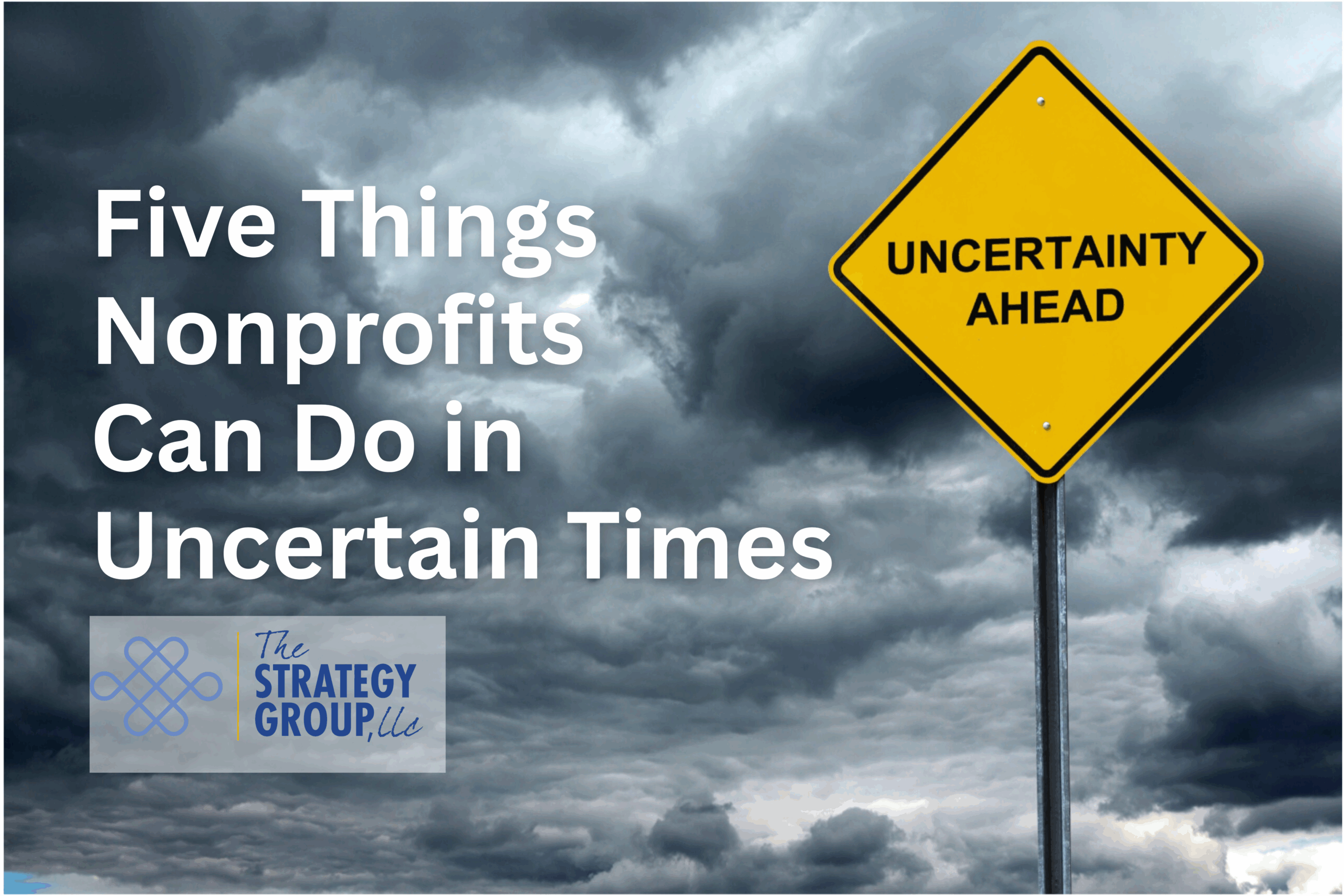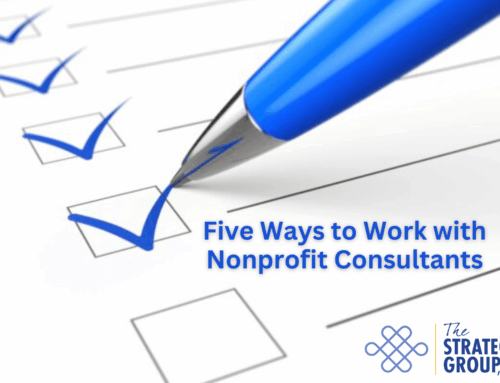In today’s undulating and whipsaw world, nonprofit leaders are facing a period of unprecedented uncertainty. This isn’t just about scenario planning anymore; while not yet full survival mode for everyone, for some, the hard decisions are unavoidable. The questions organizations are grappling with are different, focusing on how to effectively lead and operate in these challenging conditions.
Wringing your hands about the situation is not helpful. Instead, this is a time to demonstrate grit, believe in your organization’s strength, and act decisively. Nonprofits must behave like they are bigger, better, and stronger than the challenges they face. The people, places and causes you serve deserve your proactive effort.
Drawing on extensive conversations with executive directors and boards over the past several months, The Strategy Group has identified five critical areas nonprofit leaders should focus on right now to navigate uncertainty and emerge stronger.
1. Assess Honestly
In uncertain times, the first step is a rigorous, honest assessment of where your organization stands and what the next year looks like. It can be hard to plan effectively beyond that immediate horizon, but the next 12 months demand clear-eyed evaluation.
Let’s talk money. An honest revenue assessment must be grounded in reality, without relying on a “God will provide” bucket. God is busy. You need to ask yourself if your current path is sustainable. Do you need to change operations or cut back services? Do you have the chops to make the required changes?
- Ask: What does a truly honest assessment of our organization’s financial health, programs, and capacity reveal about our sustainability for the next year?
2. Embrace Change and Let Go
Even if your assessment suggests sustainability, it’s crucial to identify areas where change would be beneficial. This is not a time for inertia; maintaining the status quo simply because it’s familiar can be detrimental.
A key part of embracing change is the willingness to let go of what is no longer serving your mission effectively or what is not relevant anymore. This might involve releasing outdated metrics or programs that consume resources without delivering significant impact.
- Ask: What processes, programs, or priorities might we need to change or release to enhance our focus and effectiveness in the current environment?
3. Partner for Greater Impact
Your organization’s narrative becomes far more compelling when it is part of a broader story. Look for key partners and other institutions you can work with. Collaborating with other organizations, even those serving the same population, can amplify your collective voice and impact.
Instead of focusing solely on your organizational needs, emphasize the broader local or regional needs you address together. Working together allows for a better narrative and can address specific tasks more effectively than any single organization might alone.
- Ask: Who are potential key partners with whom we could collaborate to create a more impactful collective narrative and better serve our community?
4. Measure What Truly Matters
While heartfelt stories are important, they are not sufficient to demonstrate impact, especially when seeking significant support. You have to demonstrate results. Focusing on meaningful metrics that show the difference your services make is essential. As a former foundation head put it, “If you can make me cry… you’ll get $5,000. But if you want to get half a million dollars, you better show me the results.”
Be transparent with your stakeholders about the tangible outcomes you achieve. Recognize that some traditional metrics, like social media likes, may not be the most relevant measure of mission impact anymore.
- Ask: Are we effectively measuring and transparently communicating the tangible results and impact of our services to our stakeholders?
5. Believe in Your Grit and Capacity
Ultimately, navigating uncertainty requires belief – the conviction that your organization has the grit to get through it. This belief must start with the leadership team; if they believe, others in the organization will follow. If leadership lacks this confidence, the organization will suffer.
This is not the time for hesitant leadership; you must project confidence and convey that “we got this” and are “bigger, better than what they can put in front of us”. This conviction is owed to the people you serve, who depend on your continued strength and impact.
- Ask: How effectively does our leadership team model and communicate unwavering belief in our organization’s resilience and ability to overcome current challenges?
The Time is Now
Focusing on these five critical areas – honest assessment, embracing change and letting go, strategic partnering, measuring real impact, and cultivating belief – provides a roadmap for nonprofit leaders navigating these uncertain times. By taking steps (sometimes hard steps) in these fundamental areas, you can not only weather the current challenges but also be stronger moving forward. These actions build trust, pave the way for sustained support, and ensure your organization remains relevant and impactful.
Ready to strategize your next steps?
The Strategy Group provides transformative guidance and support to nonprofit leaders. We work collaboratively with you to assess and address your organizational needs, all focused on mission impact. If your nonprofit is ready to thrive and you need support implementing these crucial strategies, reach out to us. We’d love to help!








